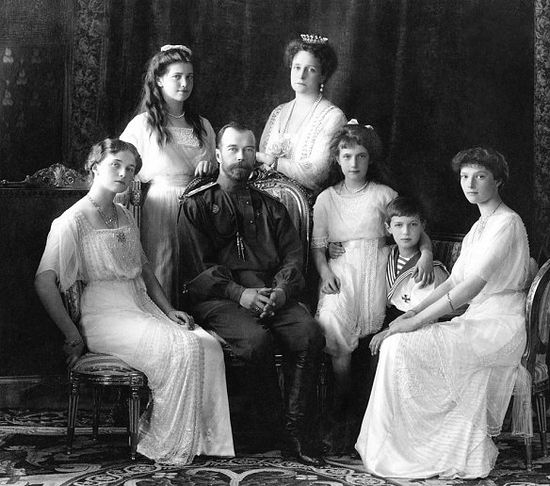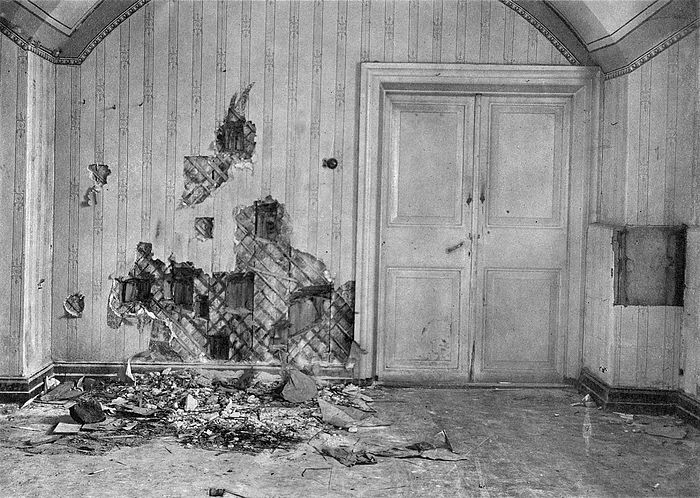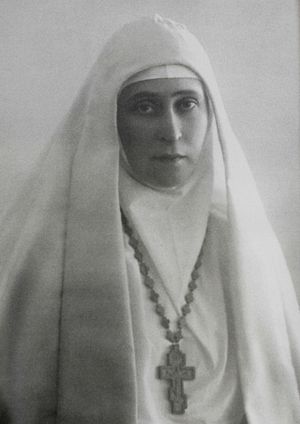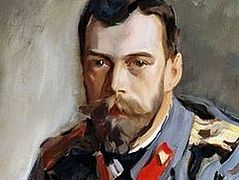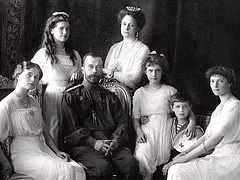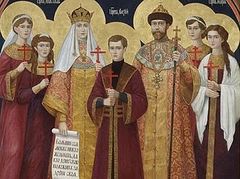Many of you already know who the people in this photograph are, but for those who do not, let me tell you why I am featuring them, and what they represent to me. Above all else, in terms of my thinking, keep in mind the premise that “Those who are ignorant of history are doomed to repeat it…”
First, let me begin with a quick note about the photograph: it was taken in 1913, 105 years ago. In 1913, World War I had not yet begun, Woodrow Wilson was President of the United States, George V King of Great Britain and Ireland. Pius X was Pope of Rome, while China had only just overthrown its millennia-old monarchy. An Ottoman sultan still reigned from Istanbul, while the Meiji Emperor had died in Tokyo the year before. Most homes in the world used neither electricity nor gas, most people used horses or carriages rather than cars, and the wealthiest kings and captains of industry were just as vulnerable as the poorest factory worker or pauper to numerous diseases which we now no longer have among us.
Look at this family pictured here, seemingly of a world so far removed from our own, a century apart, and see if you can find a glimpse into their unique personalities. Look at their faces: the two eldest daughters on the photo’s left and right edges, beautiful in the golden age of their late teens. Notice the shy, inquisitive gaze of the oldest, on the left, and the somewhat bolder smile and direct gaze of the next-oldest, on the right. The youngest daughter, whom her parents called the ‘Imp’ for her mischievous ways, stands next to her clearly naturally reserved father, arm-in-arm with the family’s youngest child, her brother and the only son. Standing in the back, the mother, who looks so much like her own maternal grandmother, places her arm on her husband’s chair; even in this photo, worry etches her face, while to her right, our left, the middle daughter, whose face radiates kindness, looks on with a thoughtful stare.
Who were these people, who was this family? What happened to them only five years after they sat for this photograph, a moment in history when their father and husband’s dynasty had, been on the throne of Russia for three hundred years and seemed certain to continue in power for generations to come?
One hundred years ago, in the pre-dawn hours of July 17, 1918, the unlawfully imprisoned Imperial Family of Russia—held without any semblance of legal authority or pretense—was murdered by a team of Bolshevik Cheka secret police along with four of their devoted servants and assistants. This was both a horrific tragedy and a history-changing political murder.
The murdered family members were: the Emperor Nicholas II Romanov (50), his wife, Queen Victoria’s beloved granddaughter, the Empress Alexandra Fyodorovna (46), their four daughters, the Grand Duchesses Olga (22), Tatiana (21), Maria (19), and Anastasia (17), and their son, the Grand Duke and Tsarevich Alexei Nikolaevich (13).
Murdered with them were their four devoted servants and friends who chose to share their exile and imprisonment: their physician Dr Eugene Botkin (53), footman Alexei Trupp (62), cook Ivan Kharitonov (47), and maid Anna Demidova (40). All the servants who stayed with the Imperial Family and shared their martyrdom were Orthodox, save for Trupp, who was a Catholic Latvian, but, interestingly, he was also glorified as a saint by the Russian Orthodox Church Outside of Russia (ROCOR) along with the others in 1981.
The murders took place in the dimly lit cellar of the Ipatiev House in the isolated town of Yekaterinburg, Ural Siberia. Led by Yakov Yurovsky, the ten killers were all convinced atheistic Bolshevik revolutionaries from Baltic Latvia and Lithuania.
The Emperor, the Empress, the two oldest Grand Duchesses, and the men died from the initial hail of bullets; the Tsarevich, Grand Duchesses Maria and Anastasia, and Anna Demidova survived the initial blasts. The princesses, wearing diamonds and other gems sewn into their dresses, were savagely bayoneted along with their brother and Demidova, who attempted to fight back. One of the family’s poor dogs, a French bulldog, was also killed, while another escaped and was later found and adopted by the anti-Bolshevik (White) Army soldiers. These details are disturbing to read and to learn, but I believe that we must know these things to understand the depths of the utter evil and the sadism that motivated the murderers, both those who gave the order and those who drunkenly carried it out.
The most disturbing part is that Lenin and all his lieutenants had—after inventing a revolutionary propaganda machine to spread both slander and distorted half-truths about the Tsar and his policies—somehow convinced themselves that these heinous murders were for the ‘good’ of ‘The People’ and the totalitarian cause of advancing the Soviet Proletariat against its ‘Class Enemies’…
The order to kill them all—not only the Emperor, but his wife, children, and their servants—came directly from Lenin and his lieutenants Yakov Sverdlov and Filipp Goloshchyokin. Not content merely with killing the Emperor, Empress, and their children and servants, their killers mutilated the victims’ bodies and then attempted to destroy them by fire before irreverently dumping them nearby at Ganina Yama.
The very next day, July 18th, 1918, the Bolsheviks killed the late Empress’ older sister, who was also the late Emperor’s aunt-by-marriage, the widowed Grand Duchess-turned-nun-and-abbess Elizabeth Fyodorovna. Along with her devoted former maid and fellow nun Varvara Yakovleva and several cadet princes of the Romanov family, the Grand Duchess was taken by the Bolsheviks to an old mine shaft at Alapaevsk, clubbed on the head, and thrown alive down the mine shaft. Save for one grand duke, Sergei Mikhailovitch, who had been shot, the others survived the fall and sang hymns down in the shaft until they died of Bolshevik grenade blasts, smoke inhalation from burning brushwood that the Bolsheviks threw down upon them, or blood loss.
One of the most beloved women in Moscow who was immensely popular with the faithful for all her social work and loving kindness—in some ways comparable to a kind of Russian Orthodox Mother Teresa figure—the Bolsheviks didn’t dare arrest Abbess-Grand Duchess Elizabeth in broad daylight. Like her sister, brother-in-law, young nieces and nephew, and millions of other future victims of Soviet repression and mass murder, Grand Duchess Elizabeth was arrested without legal pretense, imprisoned, and ultimately killed under shadow of darkness.
Glorified as martyrs in the Russian Orthodox Church Outside of Russia (ROCOR) in 1981, and glorified as passion-bearing saints in the Moscow Patriarchate of the Russian Orthodox Church in 2000, the Imperial Family and their dear servants are widely venerated throughout the Orthodox world. Many Catholics and high church Protestants also revere them as well. They are viewed by most Orthodox as martyrs (Gr. ‘witnesses’) who were killed in large measure due to their killers’ utter hatred for all religion, Christianity generally, but Orthodoxy in particularly. Others view them as ‘passion-bearers’—those who went to their deaths with Christ-like composure, forgiveness, and long-suffering.
In the short term, the brutal murders achieved what Lenin had sought—eliminating the main focal point for the unity of anti-communist White Army resistance to the Bolshevik Red Army. Within several years as the Russian Civil War began to wind down under Lenin, Trotsky, and then Stalin’s brutal regime, the United States recognized the USSR as a legitimate political entity and established full diplomatic relations with it, with other countries quickly following suit.
Yet today, increasing public veneration of the Imperial Family in Russia and Eastern Europe represents one of the most visible healings of memory. For many, it is an inseparable part of the ongoing civil society transformations of post-Soviet Russian cultural, political, and religious life. Just as many formerly communist countries have torn down their Soviet-era statues of Lenin and Stalin, statues of Nicholas II and his family and shrines to their memory have risen across Russia, Ukraine, and Serbia, with plans for more to follow.
“Those ignorant of history are doomed to repeat it”. Today millions of Western schoolchildren rightfully learn about the horrors of the Nazi Holocaust, but very few are educated about the horrors of the Soviet holocausts and various communist purges and revolutions, in which tens of millions of people have died as “enemies of the People”. This was not just in Russia and China, Ukraine, Kazakhstan, North Korea, and Cuba, but all across the world. In Vietnam, Cambodia, Georgia, Armenia, Angola, Belarus, Latvia, Lithuania, Estonia, Poland, Czechia, Slovakia, Hungary, Romania, Bulgaria, Serbia, Croatia, Bosnia and Herzegovina, Albania, Macedonia, and Mongolia, millions of people died under communist firing squads, in gulags, concentration camps, torture chambers, mental hospitals, etc. Millions more died of deliberate famine-inducing policies and purges of dissent. People must learn of communism’s murderous history or, in their ignorance, they will be more likely to sympathize with its proponents today and ignore the historical realities of its massive abuses and murders.
The growing popular veneration of the Imperial Family today is also undoubtedly part of something else, a reality that transcends a purely earthly political dimension. This is something that, while often connected to political considerations, also exists independent of them: the ongoing spiritual process of a gradual re-Christianization of Russian society after the +70 year experiment in atheistic communist Soviet dictatorship. This was an experiment with many scientific and medical achievements, but also one of innumerable totalitarian horrors, persecutions, and genocidal levels of engineered starvation in Kazakhstan and Ukraine, which, along with all the purges, claimed the lives of tens of millions of people from 1918 to 1991.
Through the wise actions and policies of so many brave men and women across the world, and, I believe, Divine Providence, this murderous experiment collapsed in less than eight decades where it had first been violently launched a century ago. A century ago today, the men ruling Russia ordered the murder of its previous ruler, its last monarch of a three centuries-old dynasty, and his entire family and household. Today, the people ruling Russia overwhelmingly abhor the ideology that inspired these murders, and instead many of them are among the patrons and pilgrims of the commemorations going on across Russian cities and towns today. In only a century, think of all that has changed. Think, too, of those who, even now, seek to bring to Western countries the communist policies which led to untold suffering for tens of millions in Russia, Eastern Europe, and indeed worldwide.
In remembering and honoring the Romanovs today and tomorrow—and all the tens of millions of victims of Soviet and communist oppression everywhere—let us keep in mind the historical nuances surrounding their lives and deaths, the examples found in both, and the reality of the hope of our Resurrection above all else. May they intercede for us all before the Throne of God!

